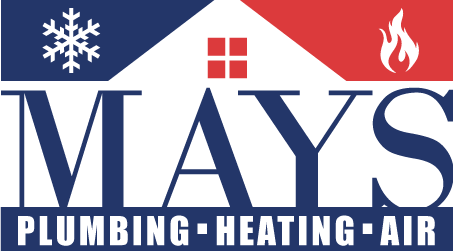How to Improve Your Roof’s Water Drainage: Essential Tips for Homeowners
Effective roof drainage is key to maintaining the integrity of any building. Poor drainage can lead to a host of issues, including leaks and structural damage. Understanding how to improve your roof’s water drainage is essential for any homeowner.
Understanding Roof Drainage
Roof drainage systems control how rainwater and melting snow are channeled off the roof and away from the home. Proper drainage not only prevents water from pooling but also safeguards the roofing material and underlying structures.
Components of Roof Drainage
- Gutters: These are critical for guiding rain away from the roof edges.
- Downspouts: They channel water from the gutters to the ground.
- Drains: Roof drains, commonly found on flat roofs, collect water and direct it away.
- Scuppers: Openings in parapet walls that allow water to flow off the roof.
Common Issues with Roof Drainage
Identifying drainage problems early is vital. Common issues include:
- Clogged Gutters: Debris such as leaves and branches can accumulate.
- Improper Slope: A roof that is not appropriately pitched can cause water to pool.
- Damaged Components: Rusted gutters and broken downspouts can compromise a system’s performance.
Essential Tips to Improve Roof Water Drainage
1. Clean Gutters Regularly
Regular maintenance is crucial. Schedule gutter cleanings at least twice a year, particularly in the spring and fall, to prevent blockages.
2. Inspect Downspouts
Ensure that downspouts are clear and directing water away from the foundation. Consider extending downspouts at least five feet from the base of the house to prevent soggy areas.
3. Add a Gutter Guard
Installing a gutter guard can be a wise investment. These devices prevent debris from entering the gutter while allowing water to flow freely.
4. Check Roof Slope
If water tends to pool on the roof, consider assessing its slope. A roof should have at least a 1 percent slope to allow water drainage effectively. Consult a roofing professional if adjustments are necessary.
5. Maintain Drains and Scuppers
For flat roofs, ensure that drains and scuppers are free from blockages. Clear any debris that might obstruct the flow of water.
6. Repair Structural Damage
Inspect the roof for any signs of structural issues. Areas that sag or have inconsistencies should be addressed immediately to prevent further water pooling.
7. Install Additional Drains
In regions prone to heavy rainfall, adding extra drains may be necessary. Discuss options with a roofing contractor to determine the best solution.
Signs of Poor Drainage
Recognizing the symptoms of poor drainage can save homeowners time and money:
- Water Stains: Dark stains on ceilings might indicate leaks originating from your roof.
- Moss or Algae Growth: This often means water is pooling somewhere on the roof.
- Bubbling Paint: If paint on your exterior walls is bubbling, it could be due to trapped moisture.
Consequences of Neglecting Drainage Issues
Failing to address drainage problems can lead to severe consequences:
- Water Damage: Mold and rot can weaken structural integrity.
- Foundation Issues: Standing water can erode soil and lead to foundation problems.
- Increased Repair Costs: Minor issues can escalate into costly repairs if overlooked.
Choosing the Right Roofing Material
The choice of roofing material can significantly impact drainage:
- Asphalt shingles: Worth considering due to their water-resistance properties.
- Metal roofing: Offers excellent drainage and longevity.
- Tile or slate: Durable but requires careful installation for proper drainage.
Hiring a Professional
In many cases, consulting a roofing professional is advisable. Their expertise can help identify underlying issues and provide equitable solutions tailored to your home.
What to Expect from a Roofing Contractor
- Initial Assessment: A thorough inspection to determine the state of your drainage system.
- Recommendations: Tailored solutions that fit your specific needs.
- Maintenance Plans: Consider asking for a regular maintenance agreement for ongoing care.
Final Thoughts
Improving your roof’s water drainage is essential for ensuring its longevity. By regularly maintaining gutters, inspecting downspouts, and addressing drainage problems proactively, homeowners can safeguard their property from the damaging effects of poor drainage. Invest time and resources to maintain a robust drainage system; the benefits will be well worth the effort.
Author: STAFF HERE HILTON HEAD
The HILTON HEAD STAFF WRITER represents the experienced team at HEREHiltonHead.com, your go-to source for actionable local news and information in Hilton Head Island, Beaufort County, and beyond. Specializing in "news you can use," we cover essential topics like product reviews for personal and business needs, local business directories, politics, real estate trends, neighborhood insights, and state news affecting the area—with deep expertise drawn from years of dedicated reporting and strong community input, including local press releases and business updates. We deliver top reporting on high-value events such as the RBC Heritage golf tournament, Hilton Head Island Wine & Food Festival, and the Gullah Celebration. Our coverage extends to key organizations like the Hilton Head Island-Bluffton Chamber of Commerce and Community Foundation of the Lowcountry, plus leading businesses in tourism and hospitality that power the local economy such as Sea Pines Resort and Sonesta Resort Hilton Head Island. As part of the broader HERE network, including HEREAiken.com, HEREBeaufort.com, HEREChapin.com, HERECharleston.com, HEREClinton.com, HEREColumbia.com, HEREGeorgetown.com, HEREGreenwood.com, HEREGreenville.com, HEREHiltonHead.com, HEREIrmo.com, HEREMyrtleBeach.com, HERENewberry.com, HERERockHill.com, and HERESpartanburg.com, we provide comprehensive, credible insights into South Carolina's dynamic landscape.




 Mays Contracting
Mays Contracting

